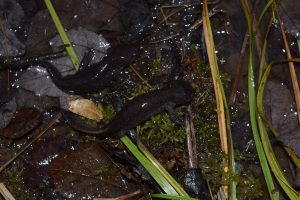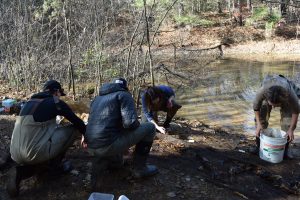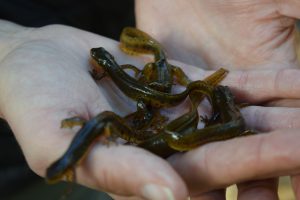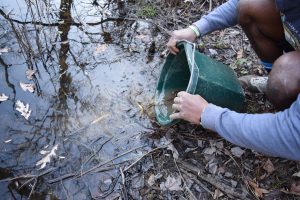Here at Equinox, we’re committed to seeing our projects through, from conception to design to implementation, and we try and keep a hand in the process when at all possible. The Willow Pond project is one that exemplifies our commitment to and involvement in our ecological restoration designs.

Willow Pond began as a stormwater retention basin created to manage runoff generated by construction of a parking area at the NC Arboretum. It served as a stormwater and sediment trap, slowing overland flows and allowing for diffused discharge. But over time this simple basin naturalized to become home to the mole salamander, a species of Special Concern here in North Carolina – the species was netted in the pond during a 2014 faunal inventory of the Arboretum.

Equinox completed a master plan proposing a constructed wetland mosaic in place of an old, silted detention pond, the goal being to create a healthier, functioning ecosystem in support of the mole salamander and other fauna utilizing the pond. Other design elements include a floating wetland island, an outdoor classroom to educate a variety of age groups, a small boardwalk with seating, and trails to access the pond. Interpretive signage will pair with curriculum to teach about the aquatic home.
Two of Equinox’s scientists, Owen Carson and Drew Alderman, recently teamed up with staff from the NC Arboretum and NC Wildlife Resources Commission to perform a rescue of fauna occupying the pond in advance of early-December construction. A concerted effort was made using sweep, seine, and dip nets, to carefully extract critters and prepare them for relocation. The result? 91 bullfrogs, 516 newts, and 48 mole salamanders (41 adult and 7 larval) were hauled up, separated, counted, then relocated to a nearby mature beaver impoundment where those species are already known to occur.

Knowing the potential for mole salamanders and others to be occupying the pond come construction, we understood that we had a responsibility to first do no harm – if the goal was to create a better habitat for these creatures, what good would we be doing if we accidentally destroyed the most critical element in the project? That’s why Owen and Drew donned their waders, rolled up their sleeves, and got their hands dirty – to follow through with our commitment to our partners and our environment!

